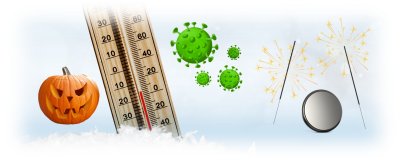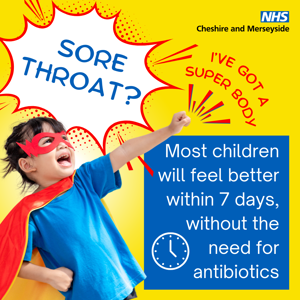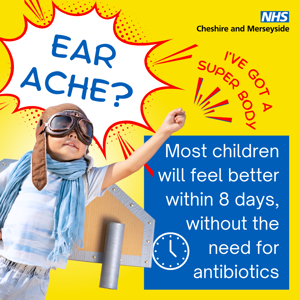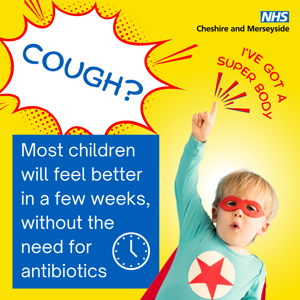Winter is upon on us. We have collated a few safety messages below to help keep you and your family safe and healthy during colder weather and darker nights. Please click on each section to view the information.

The School Aged Immunisation Service (SAIS) will be in schools and some preschools (directly attached to a school) throughout September to December to give the flu vaccine to all eligible pupils.
You will receive an email with information about your child's immunisation via school/preschool, this will include a link to our econsent webpage (Cinnamon). It’s important that you complete the online consent form and return it to us as soon as possible. If you don’t want your child to be vaccinated, please let us know by completing the form.
The vaccination can be given in two different ways:
- Nasal spray that is given in each nostril, its painless and only takes a few seconds.
- Alternatively, if your child is eligible (due to medical / religious / ethical reasons) we can offer the flu injection.
Both ways help to protect against the flu virus that circulates during the winter months. Flu can easily be transmitted via person to person so good hand hygiene is also recommended.
Common symptoms of flu include:
- Fatigue
- Headaches
- Muscle and joint pain
- Fever
- In some cases more severe illnesses such as bronchitis.
If your child is absent when we visit school/preschool or is not well enough to be vaccinated, you will recieve an email following the immunisation session. You can contact us to book an appointment in one of our catch-up clinics in a Children's Centre.
If your child is not attending school or is home educated and you would like your child to be protected again flu, please contact us on 01244 397470 or e-mail us cwp.0-19immsandscreening@nhs.net
For further information about Flu and the Flu vaccination including leaflets in different languages, please visit NHS website or contact us.
Useful resources:
Children's Flu Vacine - NHS
Flu Fighter (Children aged 5-11) - Starting Well
All about flu and how to stop getting it (easy read) - pdf
Protecting Yourself Against Flu (Young People aged 11-16) - pdf
Protecting Your Child Against Flu - pdf
flu: 5 Reasons To Vaccinate Your Child - pdf
Protecting Your Child Against Flu (Polish) - pdf
Protecting Your Child Against Flu (Ukrainian) - pdf
Protecting Your Child Against Flu (Sign Language) - YouTube

Illnesses like coughs, sore throats and ear ache are extremely common in young children, but did you know… our children’s ‘super bodies’ are designed to fight off many common illnesses, without the need for antibiotics?
These common ailments and can be unpleasant for children and their caregivers, but are most often caused by viral infections and do not need to be treated with antibiotics.
Read more at Super Bodies using the link below:



Useful links and references:
Super Bodies
Alder Hay Symptom Checker
Healthier Together App
Think Pharmacy First
Safety information from Cheshire Fire and Rescue Service
Reporting unlit dangerous bonfires in Cheshire
If you spot a build-up of rubbish, intended to be used as a bonfire, please report it to the local council immediately.
-
Cheshire West and Chester - 0300 123 7026 - street care option 2.
This time of year is one of the busiest for firefighters, who often have to deal with nuisance deliberate fires.
We want you to enjoy celebrations, but to do so safely. We would always recommend going to an organised bonfire or firework display as it is much safer to do so.
Please use the link below to read a list of organised bonifire events in Cheshire.
Organsied bonifire events in Cheshire
STOP, DROP, ROLL
Always remember, if your clothing catches fire - STOP, DROP and ROLL.
If your clothes catch fire, running around won't help. You must always stop, drop to the ground (cover you face with your hands) and roll over and over. Make sure you roll over a few times, to ensure that you put the fire out.
This video explains how to stop, drop and roll:
First aid - following a burn or scald
Good first aid following a burn or scald can make an enormous difference in recovery times and the severity of scarring. Remember to COOL, CALL, COVER.
First aid advice from the British Burn Association:
Cool the burn with running cold tap water for 20 minutes and remove all clothing and jewellery (unless it is melted or firmly stuck to the wound).
Call for help: 999, 111 or local GP for advice.
Cover with cling film or a sterile, non-fluffy dressing or cloth. Make sure the patient is kept warm.
This video explains how to cool, call, cover:
Useful links and reference:
Bonfire Night Organised Events - Cheshire Fire and Rescue
Firework Safety - RoSPA
Fireman Sam Firework and Bonfire Safety Tips - CAPT (pdf)
Halloween Costumes and Fancy Dress
What are the risks surrounding fancy dress?
Whether for a specific occasion like Halloween, or simply playing around the house, young children love to dress up. Unfortunately, fancy dress clothing has been implicated in a number of serious accidents.
Toy dress-up clothing can burn rapidly when accidentally ignited by contact with an open flame, such as a candle or open fire. This can cause serious injury, burns, and potentially death. Children are especially vulnerable in circumstances when they are playing without adult supervision.
Advice for parents
- Check that all Halloween and fancy dress costumes you buy carry a UKCA or UKNI mark on the label
- As with all clothing, Halloween and fancy dress outfits should always be kept away from fire, lit candles and all other naked flames
- If lit candles are part of your celebrations always follow their safety guidelines, and remember:
- Always supervise children and pets if using lit candles
- Do not allow children to carry, play, reach over, light or be near lit candles
- Never leave a burning candle unattended
- Remember always to extinguish a candle completely after use
- Take care when using candles at Halloween. Do not carry pumpkins with lit candles inside, consider using battery-operated candles instead
- Children should always be supervised by a suitable adult
- If fireworks are part of your celebrations, follow the Firework Code (see RoSPA fireworks safety page for more information)
- Be aware that homemade fancy dress costumes or those not tested to the same flammability standards may ignite easily and burn quicker
- Ensure children can be seen in the dark; ideally they should wear something reflective such as a reflective strip, and carry a torch.
Useful links and reference:
Halloween Safety - CAPT
Halloween Costumes and Fancy Dress - RoSPA
Firework Safety - RoSPA
No Trick or Treaters Posters (Cheshire Police) - pdf
Ice safety and winter water safety
Children are attracted to frozen lakes, canals and Lochs as they present natural play opportunities. Ice, however, can be a serious hazard in the UK in the winter.
We most often hear of people falling through the ice as a result of incidents with dog walkers, ramblers, and members of the public where it is used as a walking route/shortcut, or through play.
Ice safety advice for visitors to waterways
- Plan your route if you’re going out and about near waterways in winter
- Look out for the signs and warnings. They are placed to warn of non-obvious hazards
- Stay off the ice and frozen waters they will not be able to hold a person’s weight
- Keep away from the edge, and be aware that snow and leaves may obscure the edge
- Supervise children around ice and waterways
- Keep your dog on a lead near ice and frozen waters and don’t throw sticks or balls onto the ice for them.
If you see a person in the water:
- Call 999 and shout for help
- Stay off the ice: Help from the land to the best of your ability. Try to keep your eyes on the person at all times, especially in moving water
- Shout to the casualty to keep still to maintain heat and energy, use a calm reassuring voice if possible: Float To Live
- Look for rescue equipment or anything that will extend your reach such as a rope, pole, branch or item of clothing.
- Reach or throw out to the casualty with it. Gently guide and move the person to the shore. Make sure that you are on stable ground.
- Keep the casualty warm and make sure they go to hospital.
Useful links and reference:
Ice safety and winter water safety - RoSPA
Water safety signs to look out for - RoSPA
Winter Water Safety Poster (RLSS) - pdf
Cold Water Shock - RLSS
Winter Water Safety - Canals and River Trust
YouTube Video by: 'Cheshire Fire and Rescue'
Christmas is a time when your home is likely to be full of people, and it's in the excitement of the season that accidents can easily happen.
But one of the good things about Christmas is that there are typically more people around to supervise children and, with a little more care and forward planning, most accidents could be avoided.
Christmas Decorations and Novelties
Christmas decorations and novelties come in all shapes and sizes, and many of them look like toys and are attractive to children. But the problem is, they don’t adhere to the same safety standards as toys, and so should not be given to children to play with.
Children under 36 months are at the greatest risk, as the most common problem is decorations having parts that can easily be pulled off and put in the mouth, posing a choking risk.
To ensure you know what you are buying, check the small print on labels. Phrases such as "this is a decoration, not a toy", "keep out of reach of children", or "for use as a decoration only" will mean the product does not adhere to toy safety standards.
Useful links and reference:
Chistmas Safety - RoSPA
Christmas Decorations and Novelties - RoSPA
Toy Safety - RoSPA
Overloading is Dangerous (RoSPA) - pdf
6 Simple Safety Tips - CAPT
Button batteries are small round, silver batteries found in lots of electrical toys and devices.
If your child swallows a button battery or you think they may have swallowed one, take them to A&E straight away.
As well as being a choking hazard, button batteries can cause internal burns, internal bleeding, and in some cases, even deaths.
They can also cause burns if they're lodged in a child's nose or ear.
Dangers of button batteries to children
Safe use of button batteries - parental guidance
Useful links
Useful resources
Button Batteries Flyer - CAPT (pdf)
Button Batteries Poster - CAPT (pdf)
Button Batteries Factsheet - CAPT (pdf)
Button Batteries Factsheets in Community Languages - CAPT (pdf)

